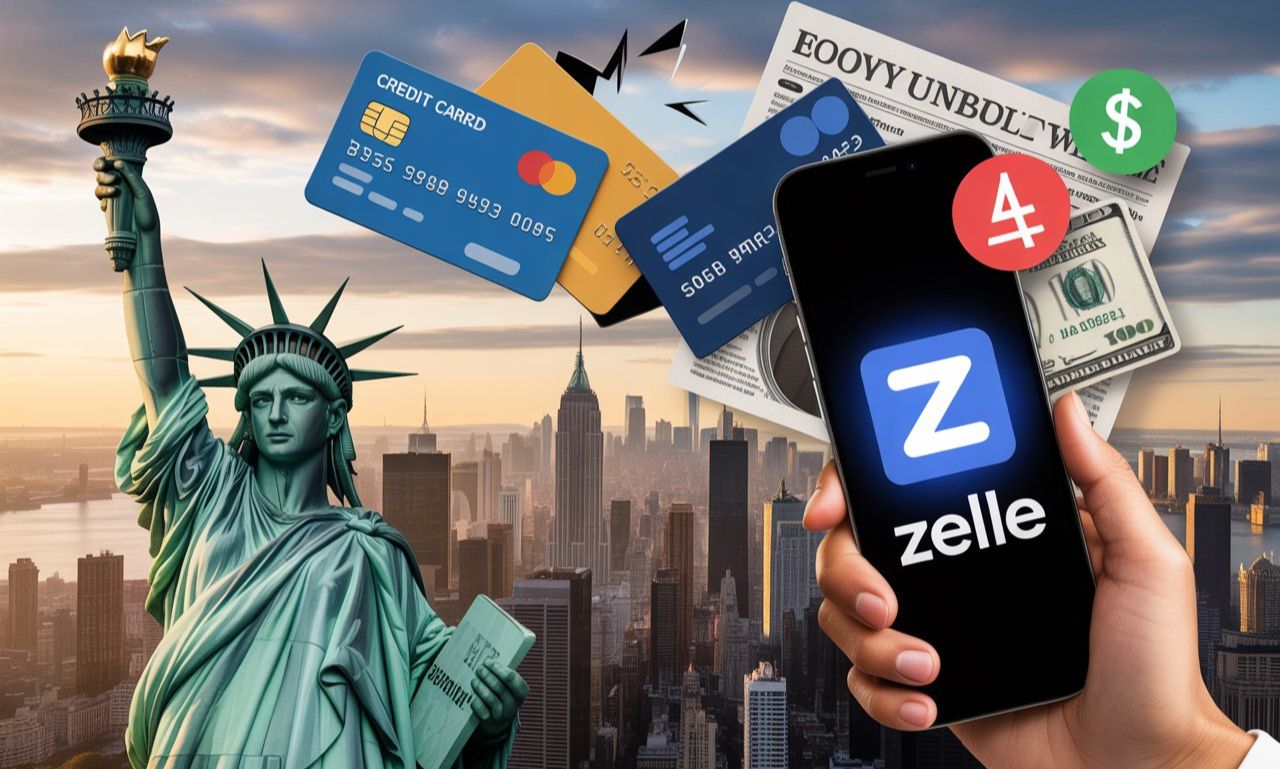Imagine losing thousands to a scammer via a payment app you trusted. New York sues Zelle, says security lapses led to $1 billion consumer fraud losses, spotlighting vulnerabilities in the popular payment platform. This 2025 guide unpacks the lawsuit, its implications, and actionable steps to protect yourself, offering clarity for users, businesses, and policymakers navigating digital payment safety.
Why New York Sues Zelle for Security Lapses
On August 13, 2025, New York Attorney General Letitia James filed a lawsuit against Early Warning Services (EWS), Zelle’s parent company, alleging that inadequate security measures enabled scammers to steal over $1 billion from U.S. consumers between 2017 and 2023. The lawsuit, filed in Manhattan’s New York state court, claims EWS prioritized rapid user growth over fraud prevention, leaving millions vulnerable. A 2025 CBS News report notes the lawsuit seeks restitution for affected New Yorkers and court-ordered anti-fraud measures.
A victim, Sarah, shared, “I lost $1,500 to a fake utility scam on Zelle—my bank said they couldn’t help.”
Understanding the Allegations Against Zelle
Security Flaws in Design
The lawsuit highlights Zelle’s quick registration process and lack of verification, allowing scammers to create accounts mimicking trusted entities like Con Edison. Limited transaction information displayed to users enabled fraudsters to deceive consumers, per a 2025 Forbes report. EWS allegedly knew of these flaws but failed to act promptly.
Failure to Enforce Rules
EWS did not enforce anti-fraud policies with its partner banks, including JPMorgan Chase and Bank of America, even after receiving fraud reports. A 2025 ConsumerAffairs article notes that banks often delayed reporting scams, allowing fraudsters to target more victims.
Real-World Impact
From 2017 to 2023, fraudsters stole over $1 billion, with cases like a New Yorker paying $1,477 to a “Coned Billing” account after a fake shutoff threat. The lawsuit claims EWS’s inaction caused “catastrophic harm” to millions.
Types of Zelle Scams Highlighted in the Lawsuit
The lawsuit identifies two primary scam types:
- Takeover Fraud: Scammers hack accounts or steal devices to transfer funds to accounts they control.
- Induced Fraud: Fraudsters impersonate trusted entities (e.g., banks or utilities) to trick users into sending money.
A 2025 Reuters report cites a case where a user sent $2,600 via Zelle for a nonexistent puppy, only to face refusal from both Zelle and their bank for a refund.
Zelle’s Response to the Lawsuit
Zelle, operated by EWS, called the lawsuit a “political stunt” and a “copycat” of a dismissed 2024 Consumer Financial Protection Bureau (CFPB) case. A spokesperson claimed 99.95% of Zelle transactions occur without fraud reports, leading the industry. They argued that scams originate from criminals tricking users, not platform flaws, and holding Zelle liable could raise consumer fees, per a 2025 The Hill article.
How Zelle Compares to Other Payment Apps
| Platform | Parent Company | Transaction Volume (2024) | Fraud Rate | Key Security Feature |
|---|---|---|---|---|
| Zelle | Early Warning Services | $806 billion | 0.05% (claimed) | Bank-backed transfers |
| Venmo | PayPal | $300 billion | 0.1% (est.) | Social payment alerts |
| Cash App | Block Inc. | $400 billion | 0.15% (est.) | PIN/biometric security |
| PayPal | PayPal Holdings | $1.5 trillion | 0.08% (est.) | Buyer protection |
Zelle’s bank integration offers speed but lacks PayPal’s robust buyer protections, per 2025 industry data.
Protecting Yourself from Zelle Scams
To avoid falling victim, follow these steps:
- Verify Recipients: Confirm email or phone numbers before sending money—scammers use similar-looking addresses.
- Enable Two-Factor Authentication (2FA): Secure your bank account and Zelle app with 2FA to prevent unauthorized access.
- Avoid Urgent Requests: Be wary of urgent payment demands, like fake utility shutoffs. Verify directly with the company.
- Use Small Transactions First: Test new recipients with small amounts (e.g., $1) to ensure legitimacy.
- Report Scams Immediately: Contact your bank and Zelle support within 24 hours to maximize recovery chances.
A small business owner, Mike, avoided a $3,000 scam by verifying a client’s email before transferring funds.
FAQ: New York Sues Zelle for Security Lapses
1. Why did New York sue Zelle for $1 billion in fraud losses?
New York claims Zelle’s security lapses, like weak verification, enabled scammers to steal over $1 billion from 2017–2023.
2. What are the main allegations against Zelle?
Zelle’s parent, EWS, failed to implement anti-fraud measures and enforce rules, allowing widespread scams.
3. What types of scams are common on Zelle?
Takeover fraud (hacked accounts) and induced fraud (impersonation scams) are prevalent.
4. How does Zelle respond to the lawsuit?
Zelle calls it a “political stunt,” claiming 99.95% of transactions are fraud-free.
5. Can victims recover money lost on Zelle?
Recovery is tough, but prompt reporting to banks and Zelle may help; the lawsuit seeks restitution.
6. How can I protect myself on Zelle?
Verify recipients, enable 2FA, and avoid urgent payment requests.
7. How does Zelle compare to Venmo or PayPal?
Zelle offers faster bank transfers but fewer fraud protections than PayPal’s buyer policies.
Impact on Consumers and Businesses
For Consumers
The lawsuit highlights the risks of instant, irreversible transfers. Victims often face banks refusing refunds, as seen in a case where JPMorgan Chase declined to recover $1,477 lost to a fake utility scam. New York’s push for restitution could set a precedent for consumer protections.
For Businesses
Companies relying on Zelle for payments may face stricter regulations. A 2025 PCMag report suggests businesses could see higher fees if Zelle implements mandated anti-fraud measures. Small businesses should diversify payment options to mitigate risks.
A retailer, Lisa, switched to PayPal for customer payments after a Zelle scam cost her $2,000 in 2024.
What’s Next for Zelle and Digital Payments?
The lawsuit, following a dropped CFPB case in March 2025, signals growing scrutiny of fintech platforms. If successful, it could force Zelle to adopt stronger verification and fraud reporting systems, potentially raising costs but improving safety. Industry experts predict a 20% increase in digital payment security investments by 2026, per a 2025 CoinGecko report. Meanwhile, competitors like PayPal and Venmo may gain market share if Zelle’s reputation falters.
Advanced Tips for Safe Digital Payments
For experienced users and businesses:
- Use Multi-Layer Security: Combine 2FA with VPNs for secure transactions on public networks.
- Monitor Transactions: Set up real-time alerts with your bank to catch unauthorized transfers instantly.
- Diversify Platforms: Use PayPal or Cash App for transactions needing buyer protection, reserving Zelle for trusted contacts.
- Track Legal Updates: Follow the lawsuit’s progress on ag.ny.gov for potential refund opportunities.
- Educate Staff: Train employees on scam red flags, like urgent payment demands, to protect business accounts.
A financial advisor saved $5,000 by training her team to verify Zelle payments, avoiding a phishing scam.
Conclusion: Navigating Zelle Amid the Lawsuit
New York sues Zelle, says security lapses led to $1 billion consumer fraud losses, exposing critical vulnerabilities in the platform’s design. While Zelle disputes the claims, users must stay vigilant with verification and 2FA to avoid scams. By following the steps outlined, you can use Zelle safely or explore alternatives like PayPal. Visit ag.ny.gov to report fraud or learn more about the lawsuit, ensuring your financial security in 2025’s digital landscape.

